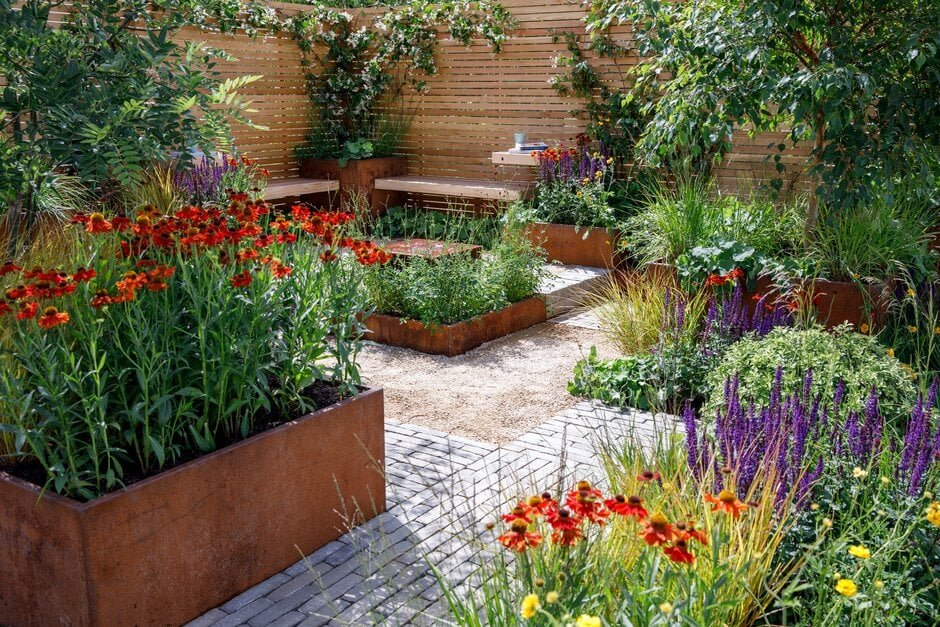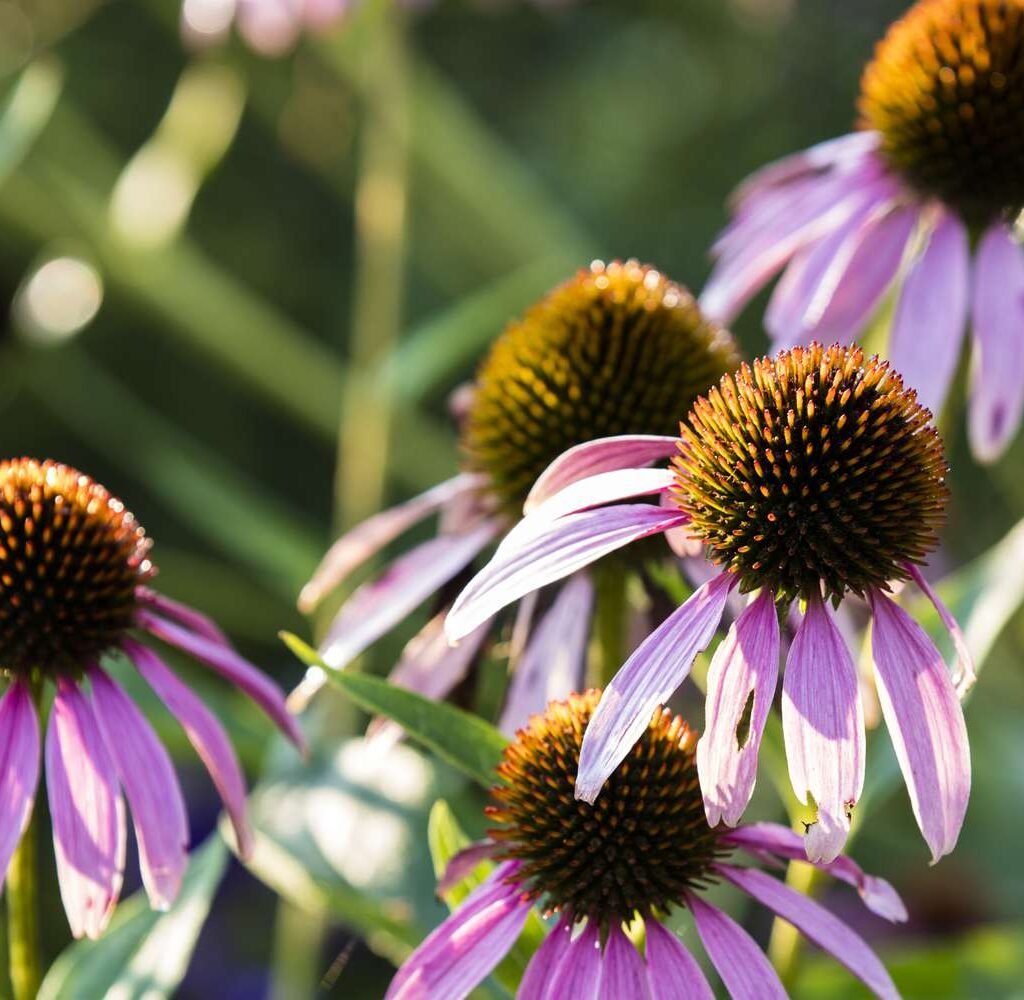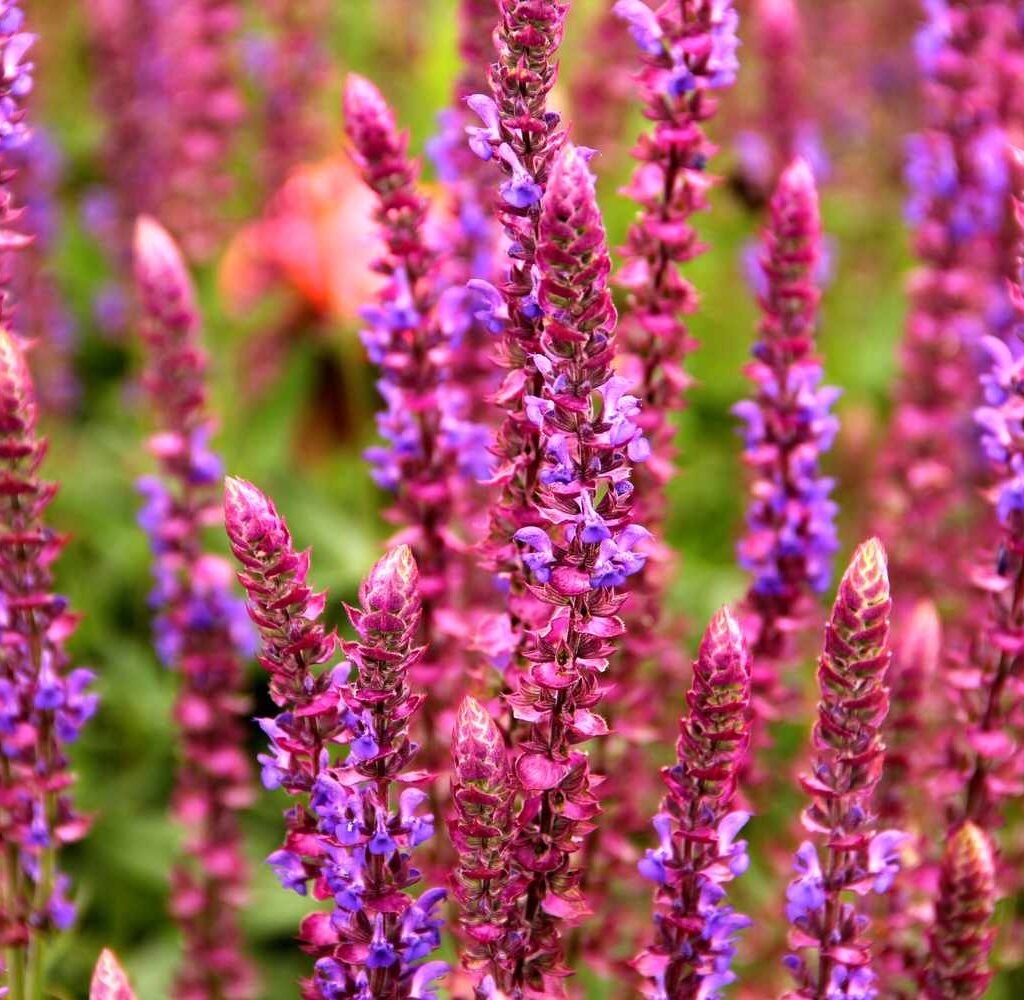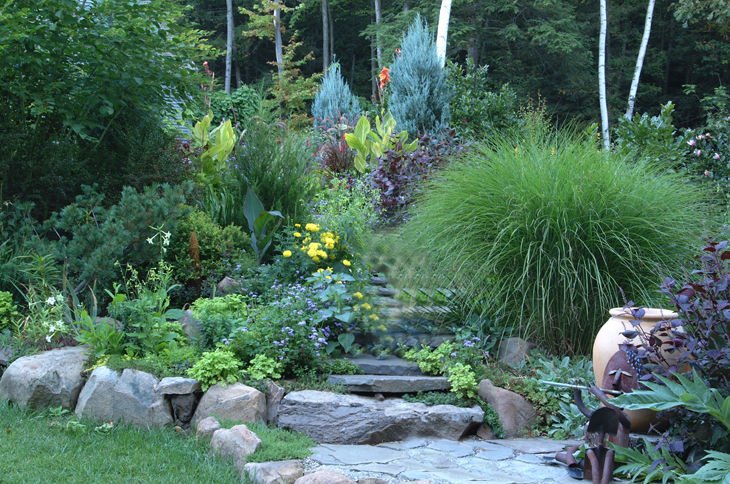A perennial garden is a gardener’s dream: once planted, many perennials return year after year, offering color, texture, and life to your outdoor space with minimal effort. Creating a low-maintenance perennial garden means designing a space that is visually appealing, sustainable, and easy to care for, allowing you to enjoy the beauty of your garden without spending countless hours on upkeep.
This guide explores the step-by-step process for creating a low-maintenance perennial garden, including plant selection, garden design, soil preparation, and care techniques that reduce maintenance while maximizing aesthetic appeal.
1. Planning Your Low-Maintenance Garden

Planning is the foundation of a successful perennial garden. Proper planning ensures plants thrive and reduces the need for constant care.
Consider Garden Location:
- Sunlight: Determine which areas are full sun, partial shade, or full shade, as perennials have specific light requirements.
- Soil Quality: Assess soil fertility and drainage. Poor drainage can lead to root rot, while overly sandy soil may require enrichment.
- Wind Exposure: Plant wind-sensitive species near protective structures or shrubs.
Garden Layout Tips:
- Use layers of height: Taller plants in the back, mid-height perennials in the middle, and ground-covering species in front.
- Group by Water and Sun Needs: Planting species with similar requirements together reduces watering and care efforts.
- Include paths or stepping stones to minimize trampling and simplify maintenance.
Tip: Sketch a garden plan to visualize plant placement and anticipate growth patterns.
2. Choosing Low-Maintenance Perennials

Selecting the right perennials is key to minimizing work. Look for plants that are drought-tolerant, disease-resistant, and self-seeding or long-blooming.
Recommended Low-Maintenance Perennials:
- Lavender: Drought-tolerant, fragrant, and attracts pollinators. Minimal pruning required.
- Daylilies (Hemerocallis): Adaptable to various soils, rebloom with little care.
- Hostas: Ideal for shade, slow-growing, and pest-resistant if properly cared for.
- Sedum (Stonecrop): Hardy succulent that thrives in poor soil with minimal watering.
- Echinacea (Coneflower): Long-blooming, drought-resistant, and attracts beneficial insects.
- Heuchera (Coral Bells): Low-maintenance foliage plant for texture and color in shade.
- Nepeta (Catmint): Hardy, fragrant, and deer-resistant, with long bloom periods.
Tip: Choose native perennials whenever possible—they are naturally adapted to local conditions and require less care.
3. Soil Preparation and Mulching

Healthy soil is the cornerstone of a low-maintenance garden. Proper soil preparation ensures your perennials grow strong and resist pests and diseases.
Steps for Soil Preparation:
- Test Soil: Check pH and nutrient levels. Most perennials prefer slightly acidic to neutral soil (pH 6–7).
- Amend Soil: Incorporate compost or organic matter to improve fertility, structure, and drainage.
- Loosen Soil: Break up compacted areas to allow roots to establish quickly.
Mulching Benefits:
- Retains moisture, reducing watering frequency.
- Suppresses weeds, minimizing weeding labor.
- Protects roots during winter and summer extremes.
Tip: Use organic mulch such as bark, straw, or shredded leaves for long-term soil enrichment as it decomposes.
4. Efficient Planting Techniques

Planting correctly ensures that perennials establish quickly and thrive with minimal intervention.
Tips for Low-Maintenance Planting:
- Plant in Groups: Clumping perennials together reduces watering needs and creates a fuller visual impact.
- Use Raised Beds or Berms: Improves drainage and reduces soil compaction.
- Spacing: Avoid overcrowding; allow airflow to reduce fungal diseases and minimize pruning.
- Layering: Combine tall, medium, and ground-cover perennials to create self-maintaining layers that suppress weeds naturally.
Tip: Adding companion plants with complementary bloom times ensures continuous color without extensive maintenance.
5. Watering Strategies for Minimal Effort
Water management is one of the biggest challenges in gardening. Low-maintenance gardens require smart watering techniques.
Watering Tips:
- Drip Irrigation: Delivers water directly to roots, reducing waste and evaporation.
- Deep Watering: Water less frequently but deeply to encourage strong root systems.
- Drought-Tolerant Plants: Incorporate species like lavender, sedum, and echinacea that require minimal watering once established.
- Rainwater Harvesting: Collect rainwater for irrigation to save resources and ensure healthy plants.
Tip: Apply mulch after watering to lock in moisture and reduce evaporation.
6. Pruning and Deadheading Techniques

Proper pruning and deadheading promote healthy growth and prolonged blooms with minimal effort.
Deadheading:
- Remove spent flowers from perennials like daylilies and echinacea to encourage reblooming.
- Prevents self-seeding in areas where you want controlled growth.
Pruning:
- Prune shrubs and tall perennials annually to maintain shape and vigor.
- Cut back perennials in late fall or early spring to reduce disease and prepare for new growth.
Tip: Use clean, sharp tools to prevent plant damage and reduce disease spread.
7. Pest and Disease Management
A low-maintenance garden thrives when pests and diseases are managed naturally.
Preventive Measures:
- Companion Planting: Use plants that repel pests, such as lavender or marigolds, near susceptible perennials.
- Mulch: Reduces weeds and helps prevent fungal diseases caused by soil splash.
- Watering Practices: Avoid overhead watering to reduce leaf diseases.
- Regular Inspection: Catching problems early avoids extensive intervention.
Natural Remedies:
- Neem oil for aphids and mites.
- Handpicking pests from leaves.
- Encourage beneficial insects like ladybugs and lacewings to control pests naturally.
Tip: Choose disease-resistant perennials to minimize the need for chemical interventions.
8. Seasonal Care and Maintenance
Even a low-maintenance garden benefits from seasonal attention.
Spring:
- Mulch, prune, and divide crowded perennials.
- Inspect soil and amend if necessary.
Summer:
- Water deeply during dry periods.
- Deadhead to prolong blooming.
Fall:
- Cut back perennials and remove debris to prevent pests and fungal diseases.
- Apply a fresh layer of mulch to protect roots over winter.
Winter:
- Monitor for frost damage and protect sensitive perennials with burlap or straw.
- Plan next season’s plantings and rotations.
Tip: Keeping a seasonal gardening calendar reduces stress and ensures consistent care with minimal effort.
9. Enhancing Beauty with Low-Maintenance Techniques
- Plant Color and Texture: Mix foliage colors, textures, and bloom times to maintain visual interest.
- Pathways and Borders: Use gravel, stepping stones, or low-maintenance edging plants for structure.
- Natural Mulches: Wood chips or shredded bark provide an attractive, functional layer that reduces weeds.
- Ornamental Grasses: Add movement and year-round interest with minimal care.
Tip: Select plants that self-seed or spread slowly to reduce replanting needs while ensuring continuity.
10. Benefits of a Low-Maintenance Perennial Garden
- Time-Saving: Less daily upkeep compared to annual gardens.
- Cost-Effective: Once established, perennials return year after year.
- Sustainable: Less water, fertilizers, and pesticides are required.
- Biodiversity: Attracts pollinators, birds, and beneficial insects.
- Aesthetic Value: Provides year-round interest with minimal effort, creating a relaxing, colorful outdoor space.
Conclusion
Creating a low-maintenance perennial garden is about smart planning, careful plant selection, and sustainable practices. By choosing drought-tolerant, disease-resistant perennials, grouping plants by needs, and using smart soil and watering techniques, you can design a garden that thrives year after year with minimal effort.
Incorporating seasonal care, mulching, and natural pest control ensures that your garden remains healthy and vibrant without demanding constant attention. With the right mix of perennials, you can enjoy a visually stunning, eco-friendly, and low-effort garden that provides beauty, texture, and life to your outdoor space year-round.
Tip: Start small and expand gradually, experimenting with plant combinations and layouts to create a garden that is uniquely yours and easy to maintain.
